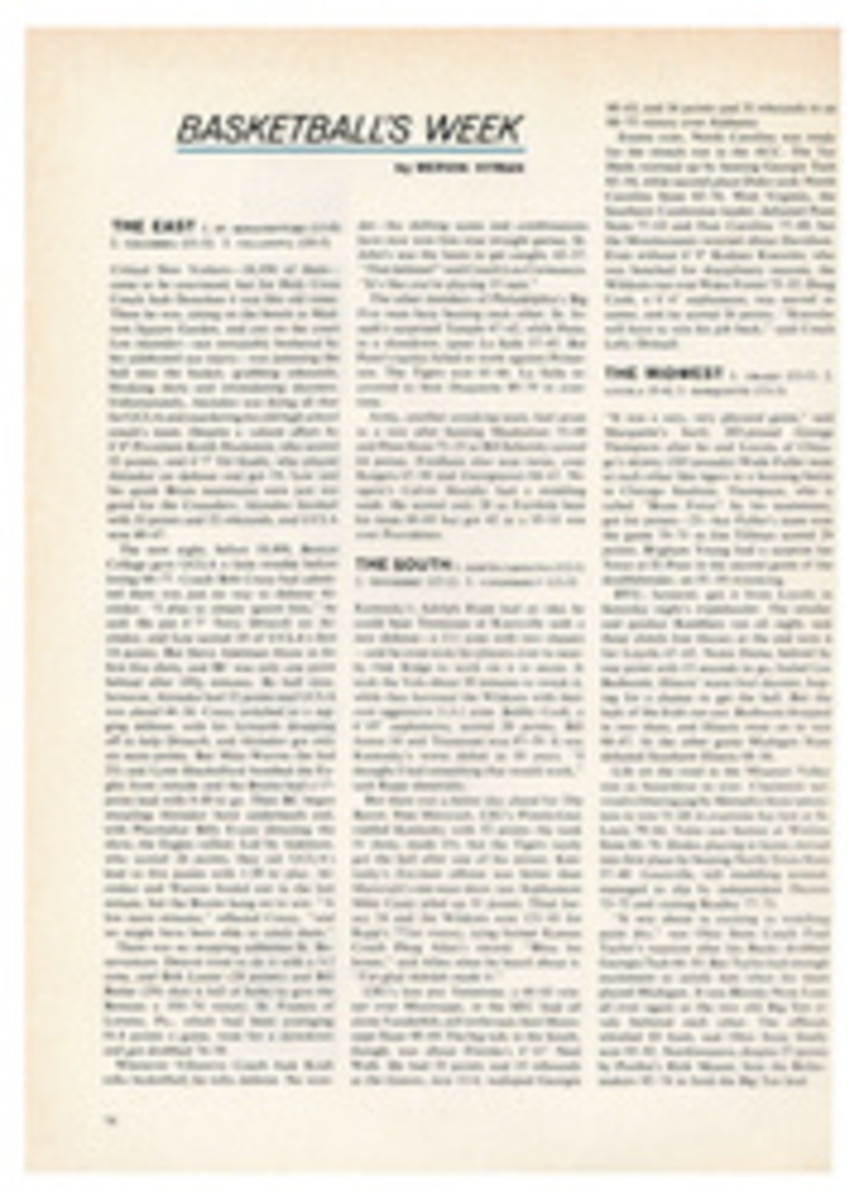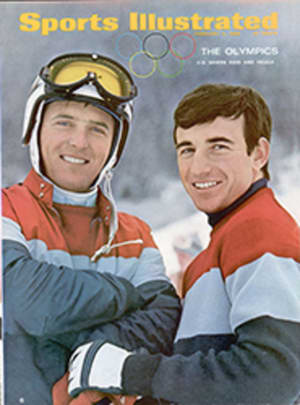
For the Strong Austrian Two-man Bob Team, Waist Makes Haste
The current two-man world bobsled champions—the team that is favored over Eugenio Monti of Italy and Tony Nash of Great Britain to win the gold medal at Grenoble—are naturals. Not only do they have the same kind of unflappable temperament, but both have beer-and-sausage girths on well-conditioned frames. In bobsledding, the heaviest team is likely to be the fastest—and the maximum allowable combined weight of both men and a two-man sled is 375 kilos, or 827 pounds. Ballast may be used to attain the weight, but the ballast is nailed down, unable to throw itself into the curves. The driver of the Austrian sled, Erwin Thaler, weighs 192 pounds, and his brakeman, Reinhold Durnthaler, weighs 188. Add the two to a 420-pound sled and you have 800 pounds—only 27 less than the maximum.
In bobbing, timing is so critical that steering is done almost by reflex. Thaler, now a graying, 38-year-old paint salesman, was a fine slalom racer as a boy. It was his skiing reflexes that attracted Dr. Kurt Loser, then the Austrian bobmaster, to invite him to join his four-man team for training at Saint Moritz in 1953. Thaler recalls that it was the free room and board that appealed to him most; he had never even seen a bob course. He went on as a middleman on Dr. Loser's four-man bob until a spill disabled him for six months. But by then the bob fever had struck, and in 1955 he returned to Saint Moritz. He was soon a two-man brakeman, and in 1958 he became a pilot and started filling a cabinet at home with trophies.
Durnthaler, a 25-year-old medical student, also got into bobbing by happenstance. His best friend in high school in Lienz was the son of the Austrian bob champion, Paul Herbert Asd, who gave him a chance on a four-man team in Garmisch-Partenkirchen in 1960, where he was spotted by Thaler. "Durnthaler was not only as fearless as I am," Thaler says, "but he was the kind of imperturbable fellow that makes a good bob partner." The two first raced as a team at the 1962 Garmisch world championships. On the first curve they left the course, destroying their sled, but they walked away unhurt. Imperturbability conquered, and at the 1963 pre-Olympics at Innsbruck, Durnthaler was picked for Thaler's four-man team at the Olympic Games. The team won a silver medal on the Igls course. The two will again be part of an Austrian four-man team at Grenoble.
Thaler and Durnthaler won the European championships in 1967. One month later they won the world championship at Alpe d'Huez on the Olympic run (SI, Feb. 20, 1967).
To keep his reflexes sharp during the off season, Thaler runs 4.5 miles on the Patscherkofel downhill in the summer, often two or three times a day. Durnthaler uses his free time to engage in various kinds of athletics. Throughout summer and fall, the 60 bobsledders who man the 22 vehicles owned by the Austrian bobsled association gather at the Innsbruck airport. The two-man teams push the 500-pound sleds, mounted on coasters, for 40 yards and then jump on, practicing starts.
Explains Thaler: "In a sport that offers less training time than any other, this prepares us for the coordination of the first seconds, when minuscule factors can be so vitally decisive."
Thaler confides that after 15 years of racing this is his last year, win or not. "I've been engaged to my girl for so many years now that perhaps she has the right to her future husband reasonably intact," he says.
Durnthaler plans to continue as a sledder at least until the time when he has to start his internship as a pediatrician. Meanwhile, why do they do it at all? Says Durnthaler, "Even when I'm only a brakeman, I get the unique thrill of utmost speed close to the ground, plus the sensation of real teamwork. The slightest nervous move, the smallest pilot error can mean the difference between life and grave injury or even death."
Erwin Thaler thinks that the approximate minute between the start and the finish of a bob run are both the longest and the shortest time experience man can achieve. He says, "No one ever goes on a bob run without the awareness that this may be his last ride and no one goes on without a silent appeal to the Lord. But once the sled gains speed and I know that the man behind me has pushed properly and jumped on correctly, every thought except that of the winding road of ice has vanished. The noise is so terrific that there can be no communication. Spectators are a blur. I can't do anything but trust my instinct to help me take the curves at angles that exploit the conditions of the run just enough to gain those fractions of seconds over my competitors. That is all it takes to win that $40 worth of gold."
And it is for that excitement that Thaler and Durnthaler are paying part of their expenses to Grenoble. The Austrian bobsled association has been flat broke since it emptied its treasury to build the Igls run for the Innsbruck Olympics and is now barely able to field its teams—even with an Olympic gold medal on the horizon.
ILLUSTRATION
PHOTO
Bobbers Thaler (right) and Durnthaler were photographed on eve of winning 1967 world title.

